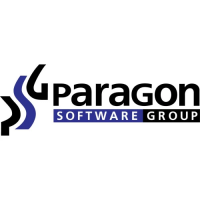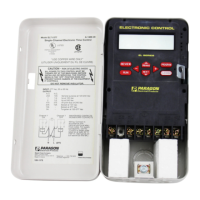Medium (2)
Use Medium for larger slip-cast pieces or more tightly
loaded kilns.
Cone-Fire Medium Firing Schedule
Segment in
“Present Actual
Status” Segment Rate of Firing Per Hour
4 — Pre-Heat (if any)
5 1 110° F. per hour until 250° F.
6 2 400° F. per hour until the last 250° F.
7 3 120° F. per hour during the last 250° F.
Slow (3)
Use Slow for hand-thrown or heavily-cast pieces, stone
-
ware and porcelain.
Cone-Fire Slow Firing Profile
Segment in
“Present Actual
Status” Segment Rate of Firing Per Hour
2 — Pre-Heat (if any)
3 1 80°F per hour to 250°F
4 2 250°F per hour until temperature
reaches 950°F
5 3 110°F per hour until temperature
reaches 1100°F
6 4 225°F per hour until the last 200°F
7 5 90°F per hour during the last
200°F of firing
8 6 150°F per hour, cooling down to
1000°F
Hold
Cone-Fire“Hold”heat-soaksthewareattheendofthefir
-
ing. Without Hold time, the kiln shuts off after it reaches the
conetemperature.WithHoldtime,thekilnmaintainsthecone
temperature for the period you specify. Hold time helps even
outthetemperaturethroughoutthekiln.Italsohelpstheheat
topenetrate completelyintothe clay.Rapidfiring islike cook
-
ing: the turkey will be done on the outside but not on the in
-
side.Holdhelpsglazeabsorbchinapaint.Ithelpstohealglaze
defects such as bubbles. A little hold time can yield dramatic
results.
CAUTION: Too much hold time can overfire your
ware and burn out colors.
One way to add Hold time without over-firing is to fire to
one cone cooler than needed. Then add enough hold time to
bendthenexthottercone.Holdtimeneededwillvary.Asarule
of thumb, one hour of hold = one cone of heat work.
Example: to fireto cone05
1
2
, program Cone-Firefor 05
and add 30 minutes of hold time.
Watch the pyrometric shelf cones through the peephole.
Press STOP when the correct shelf cone bends, noting how
much Hold time was needed. Program that much Hold time
thenexttimeyoufirethesametypeofwareloadedtothesame
capacity. You can hold for up to 99 hours and 99 minutes.
Youwilllearn byexperimentingwith ceramics.Holdisone
more tool to experiment with.
Pre-Heating the Ware
Moist greenware can explode during firing. This happens
when themoisture in theclay turnsto steamrapidly and can
-
noteasilyescape.TheDTC1000“Pre-Heat”featuredriesthe
ware at low temperature before the moisture can turn to
steam.
Pre-Heatisnecessarywhenfiringthickgreenware,suchas
stoneware. It may also be necessary in humid weather, which
inhibits drying. If possible, however, avoid using Pre-Heat to
dry greenware. If the greenware feels damp or cool when you
touch it to your cheek, dry it longer before firing. Use a
dehumidifier in humid weather.Drying greenwarein thekiln
tends to rust the kiln.
TIP:During Pre-Heat, vent the lid. Otherwise thefire
-
bricks will absorb moisture, leading to rust behind the
stainless steel case. Moisture in the firebrick will also
slow the kiln to a crawl when firing begins.
VentingthelidduringPre-Heatissoimportantthatsome
ceramistsusetheextendedventpositionorevenleavethe
lid open. If youdo this,you mustbe nearyour kilnat the
end of Pre-Heat to lower the lid.
Pre-Heat raises the temperature 60°F/33°C per hour to
200°F/93°C.Thenitholdsat200°F/93°Cforthetimeyouspec-
ify. Pre-Heat works in Cone-Fire only. After Pre-Heat is fin-
ished, the kiln will automatically begin firing to the cone you
have selected. Pre-Heat zeroes out after each firing.
CAUTION: At high altitude, water boils at a lower
temperature.Thismaycausethewaretodrytoorapidly
even during Pre-Heat.
After entering cone number, speed, etc., in the Cone-Fire
program, activate Pre-Heat as follows. Then begin firing.
1 Press ENTER.
2 Press 0repeatedly until PrHt appears.
3 Press ENTER. Hld will appear, alternating with
00.00 .
4 Enter Pre-Heat hold time in hours and minutes (i.e.1
hour, 30 minutes = 01.30).
5 Press ENTER. CPL will appear, then IdLE .
7

